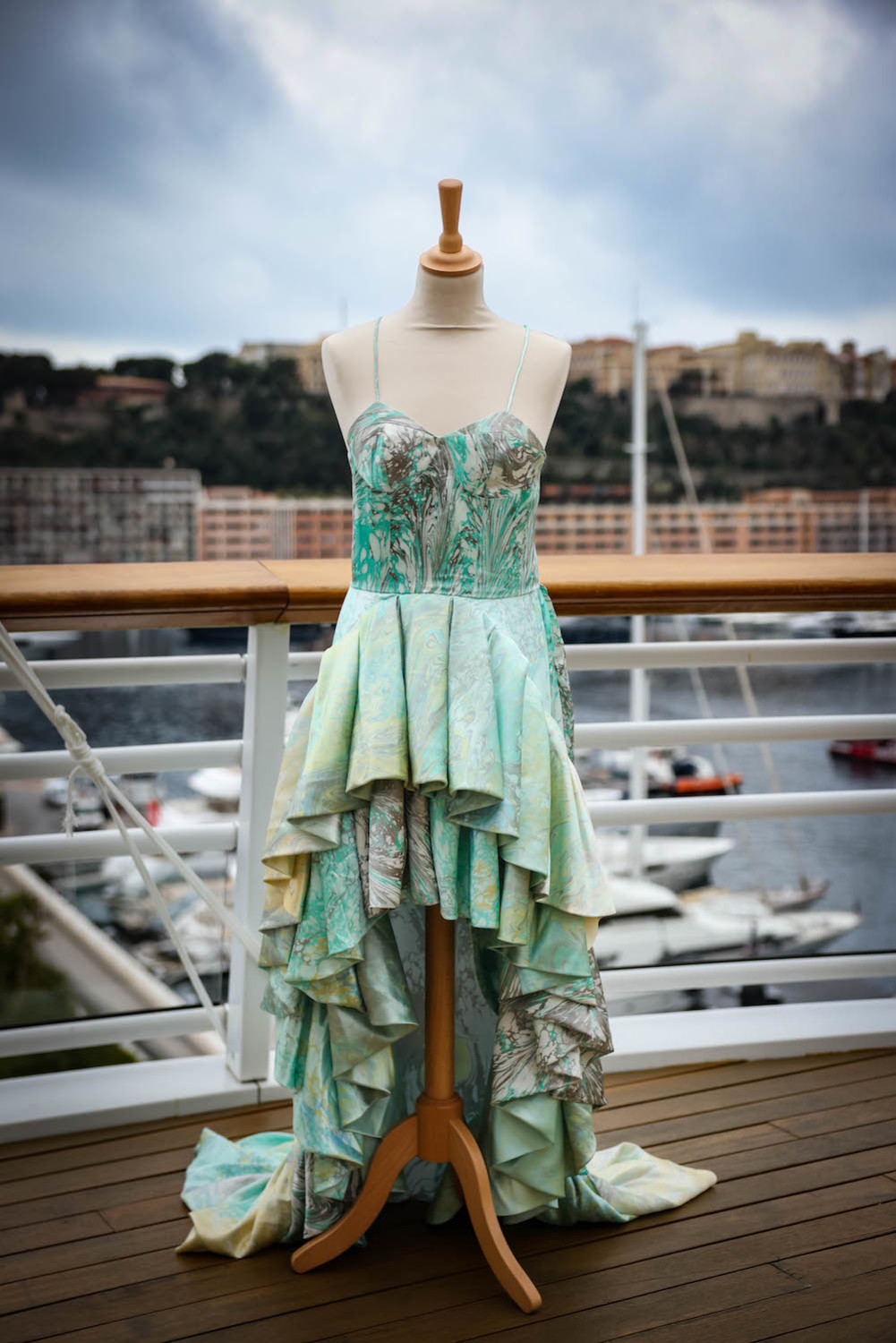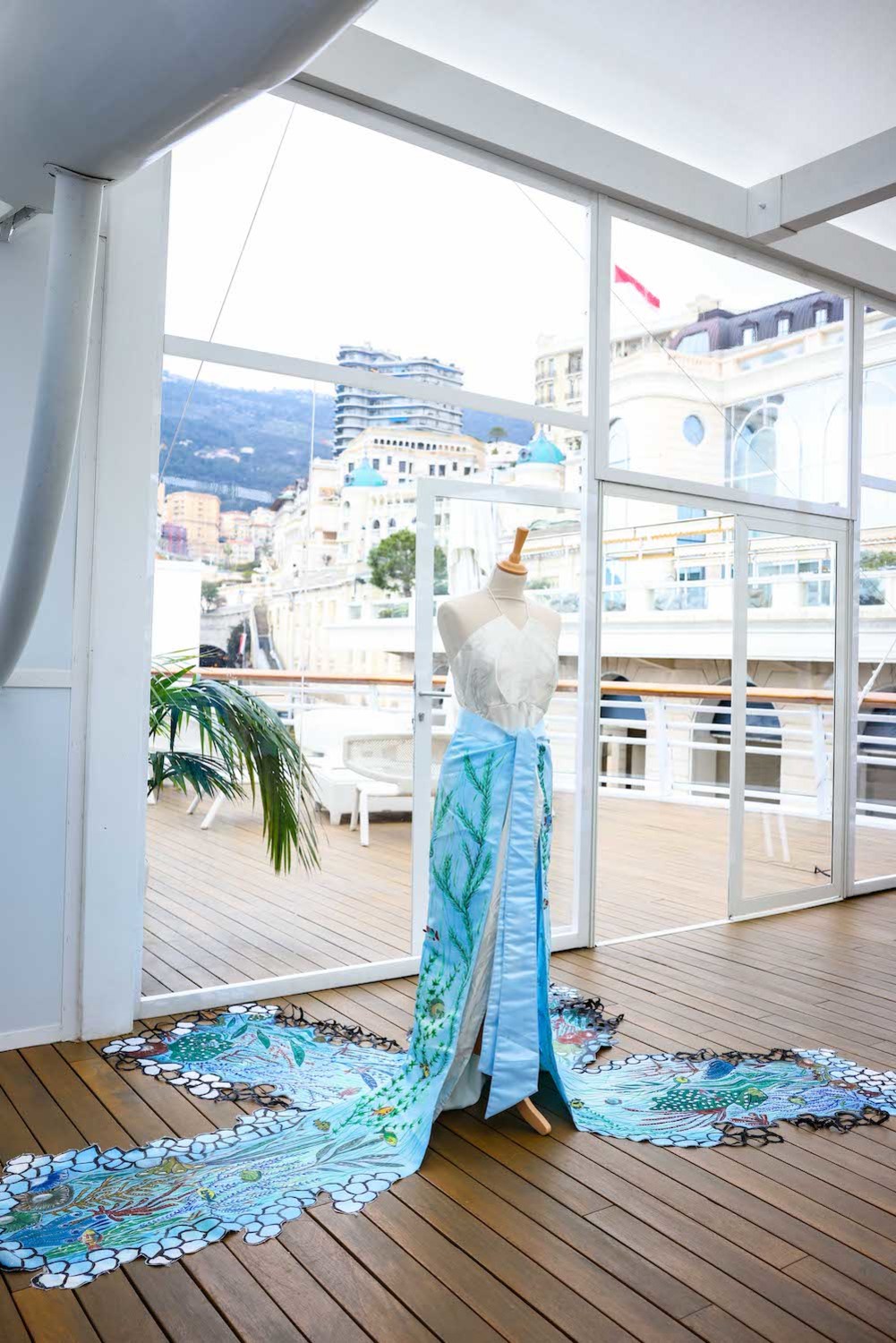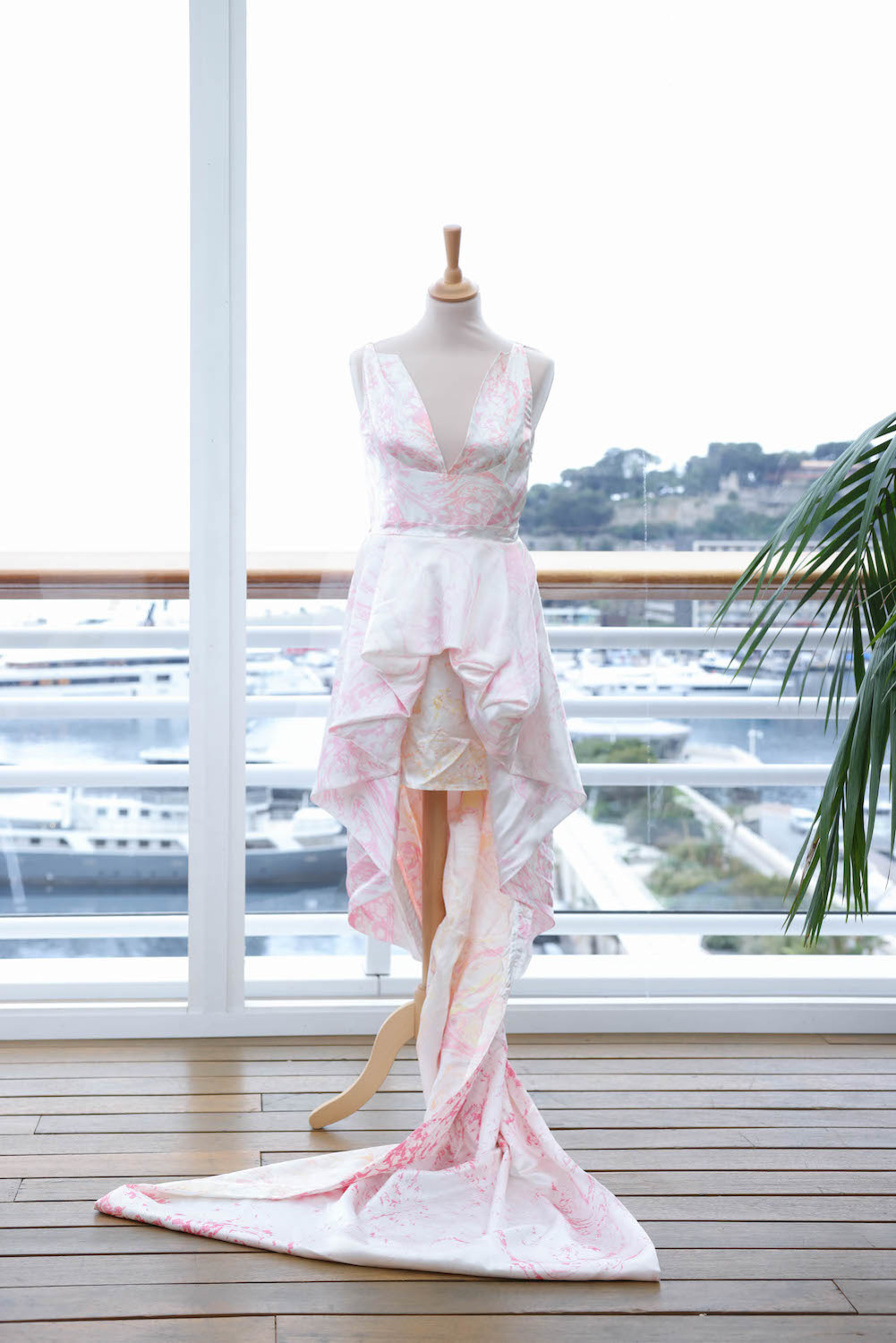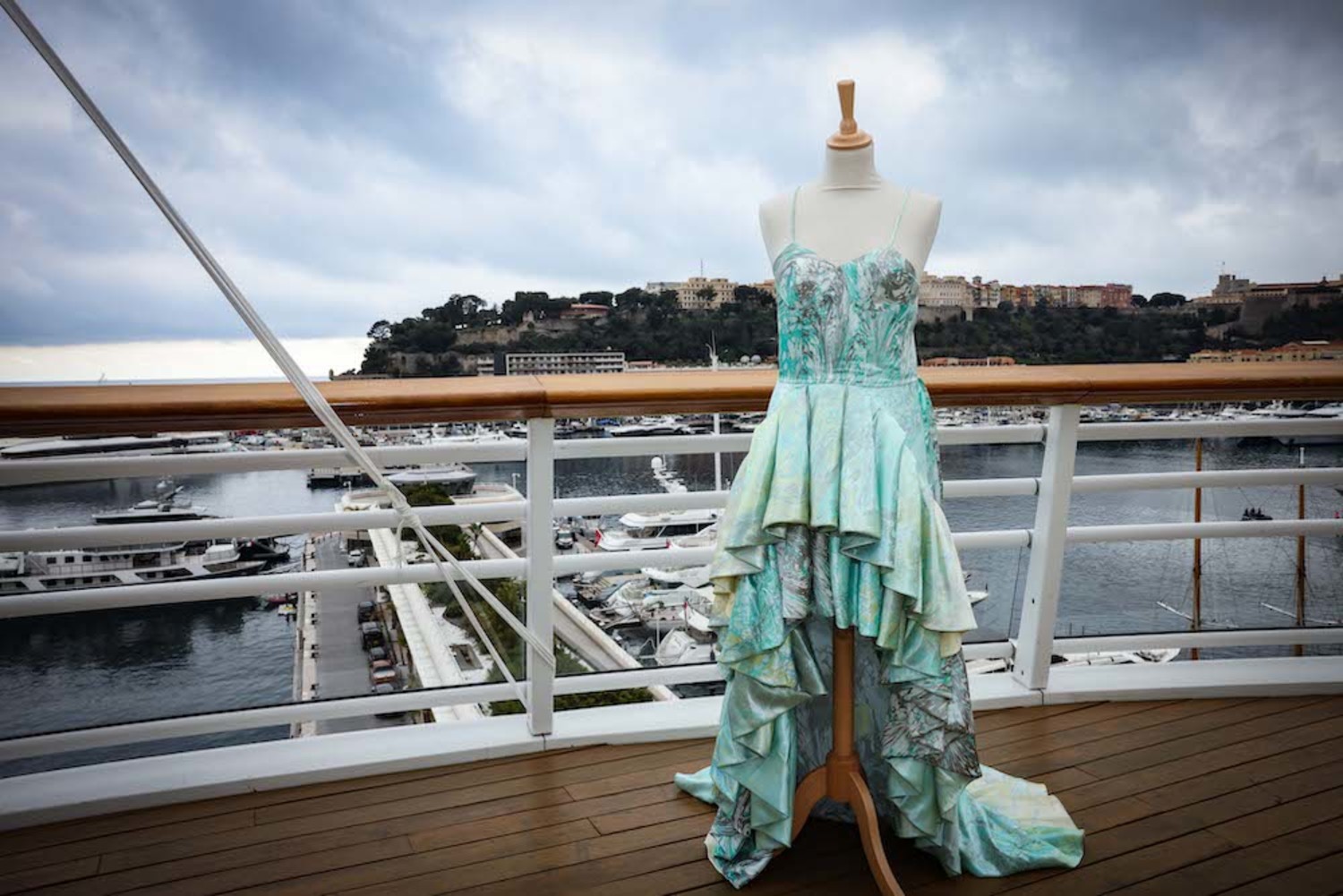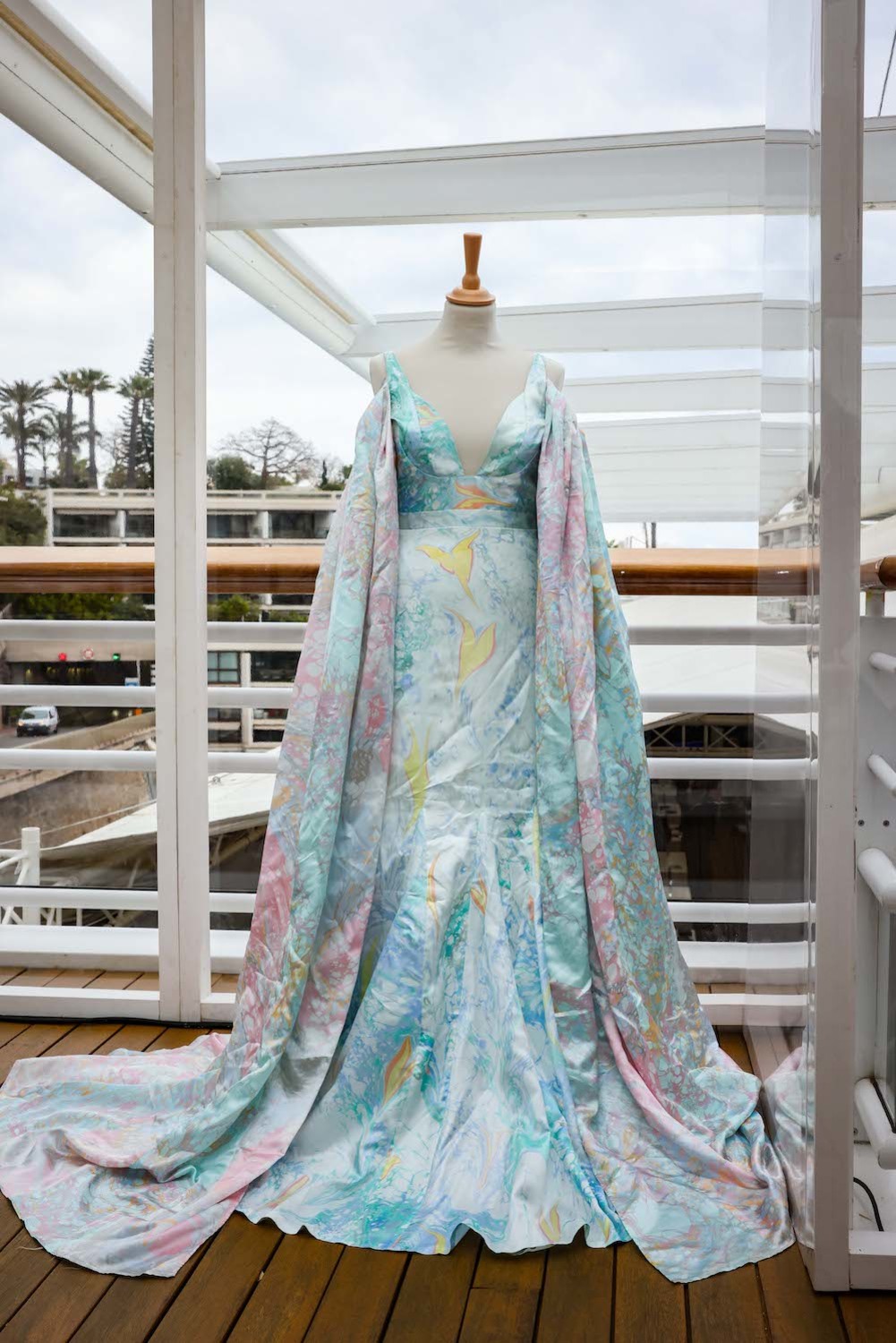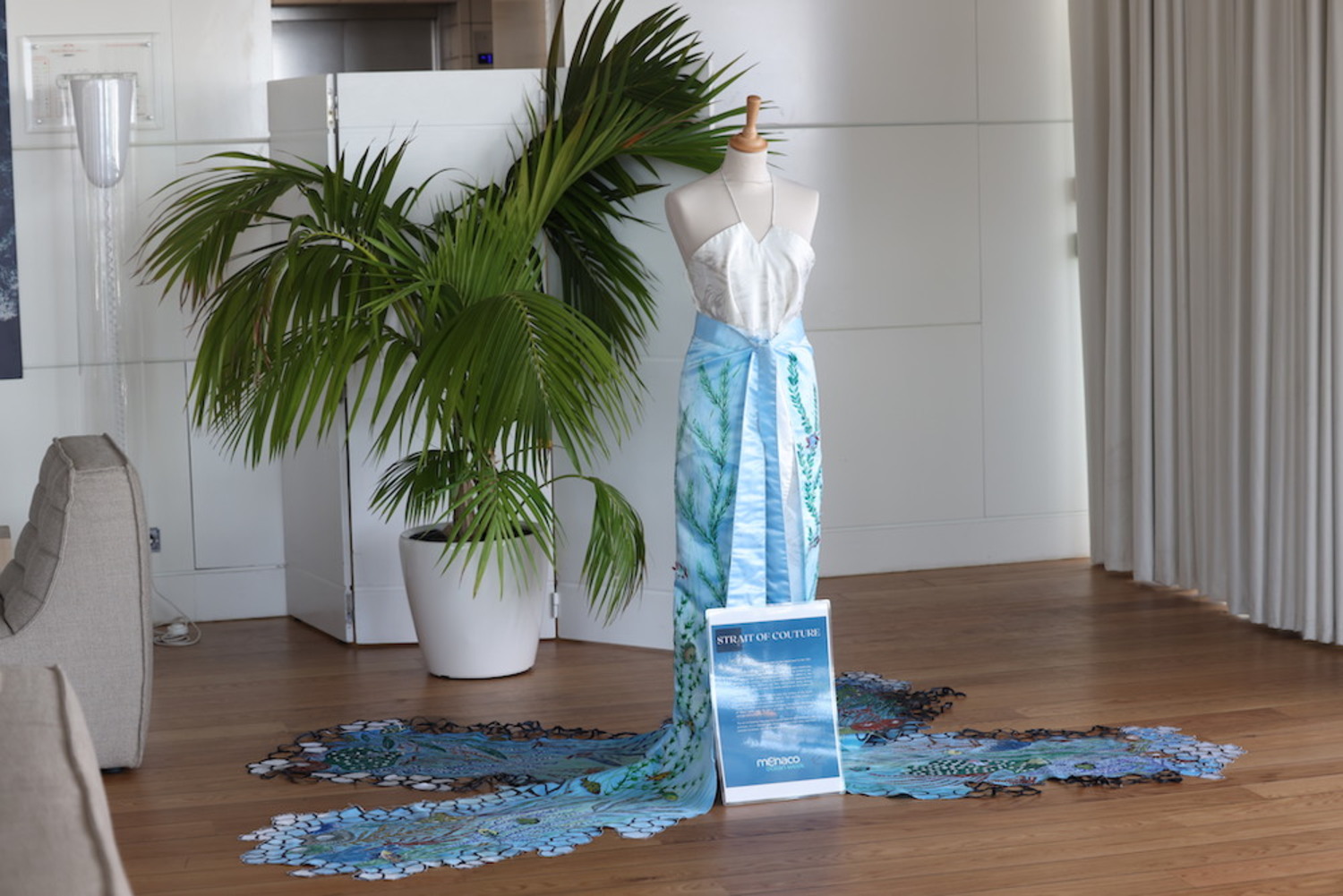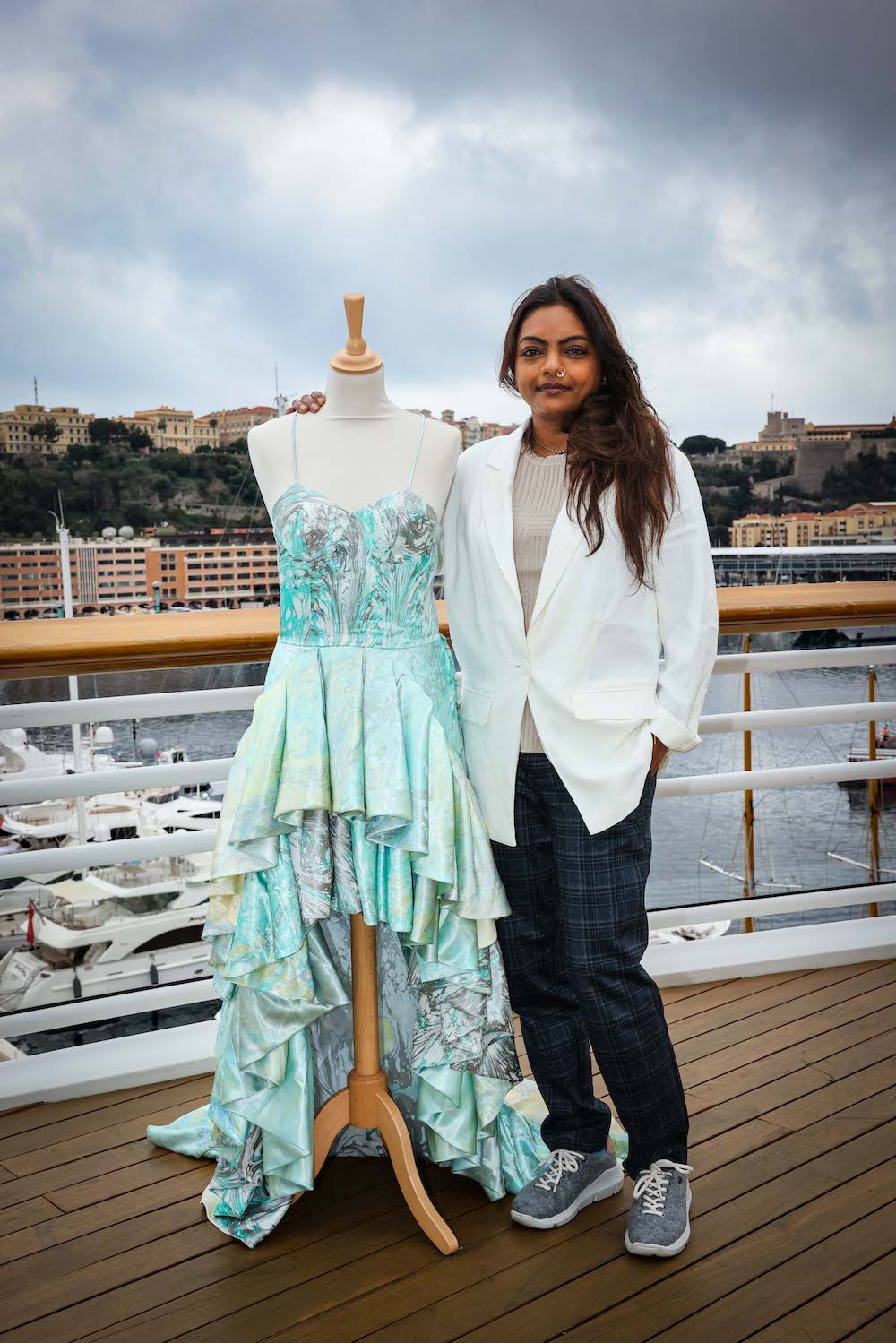
Spotlight on sustainable fashion at Monaco Ocean Week with Runa Ray
Monaco
Events
Press release
During the Monaco Ocean Week 2023, the ‘Strait of Couture’ collection by sustainable fashion designer, Runa Ray, was on display at the Monaco Yacht Club.
About Runa Ray
Runa Ray is a Fashion designer and Environmentalist who uses art as activism to advocate for policy change. She has worked extensively with the sustainable development goals and Climate Action at the United Nations. As an innovator, Runa Ray's designs encompass the reduce, reuse and recycle model. By keeping the end in mind, She has helped revive ancient indigenous techniques of garmenting that reduce our impact on Earth, alongside science-based ideas from renewable energy. Her expertise in the circularity of the Fashion Industry and zero waste initiatives helps designers, SME's and MME's in abating climate change.
About the ‘Strait of Couture’ collection
Strait of Couture is a collection of garments aimed to raise awareness about the oceans during Monaco Ocean Week. It is about bridging the gap between the source of our garments and the complete product. Most times, we do not understand the source from which our garments are created, therefore it is important to connect the dots and the people behind our clothes. This collection is based on the ancient art of water painting using seaweed.
“As a designer, I have found it extremely important to bridge the gap between our food source and fashion, because the two are inextricably linked, for example seaweed.", she explains.
The seaweed printed garments were made in collaboration with women seaweed farmers in Mandappam a coastal town in South India, by using locally produced carrageenan to print fabric through the ancient art of floating inks. The women dive into the Indian Ocean to get ‘Kadal Pasi’ or seaweed which is collected, dried, and then made into agar agar* or carrageenan. This local method of collecting seaweed for industrial purposes, serves as an alternative income for their families, and to compensate for the loss faced by the men folk, engaged in ocean fishing. The most common complaint by local fisher folk, is that bottom trawlers have erased the ocean of its fish stock. And to make matters worse, algal blooms which have started in the recent years kill fish and seaweed.”
So, while communities battle for their daily wages, the fashion industry can step up, and contribute in ways that can help educate a wider audience, make the consumer aware, and help abate climate change, one small design at a time.
About the ancient dyeing technique
The origins of the art of floating inks can be traced back to the 12th century. The process involves creating a solution of water and a thickening agent such as agar agar. Natural pigments are then added to the surface of the solution, either by sprinkling them or applying them with a brush. The pigments are then manipulated using various tools, such as combs or rakes, to create patterns on the surface of the liquid. The fabric is then carefully placed onto the surface of the liquid allowing the pigments to transfer onto it. The resulting pattern is then carefully lifted off and allowed to dry.
Using this ancient and indigenous technique, 100 meters of fabric were printed using only 75L of water, thereby negating water wastage and pollution.
*Agar agar is commonly used as a thickener, stabilizer, and emulsifier in a variety of food products. By using agar agar and natural inks, we have negated the hazards that are commonly found in the dyeing industry such as:
- Chemical exposure: many dyes used in the textile industry contain chemicals that can be hazardous to human health, such as heavy metals, formaldehyde, and aromatic amines. Exposure to these chemicals can cause skin irritation, respiratory problems and other health issues.
- Water pollution: the dyeing process can release large amounts of wastewater containing toxic chemicals, which can pollute waterways and harm aquatic life.
- Energy consumption: the dyeing process requires a lot of energy, including water heating and mechanical agitation, which can contribute to greenhouse gas emissions and other environmental impacts.
- Waste generation: The dyeing process can generate significant amounts of solid waste, such as leftover dye and packaging materials, which can contribute to landfill waste.
- Worker safety: workers in the textile industry who handle dyes and chemicals are at risk of exposure to hazardous substances and may not have proper protective equipment or training.
“The Seaweed industry has been dominated by women for centuries, where they are responsible for the collection of local indigenous seaweed and creation of agar agar. If we, as designers, work towards cross industrial collaboration, we are creating new green economies as well as generating additional income for communities. It is only through these kinds of cross-cultural and industrial pollination that we can save the golden goose, that lays the golden eggs.” – Runa Ray.
